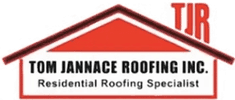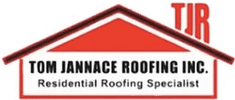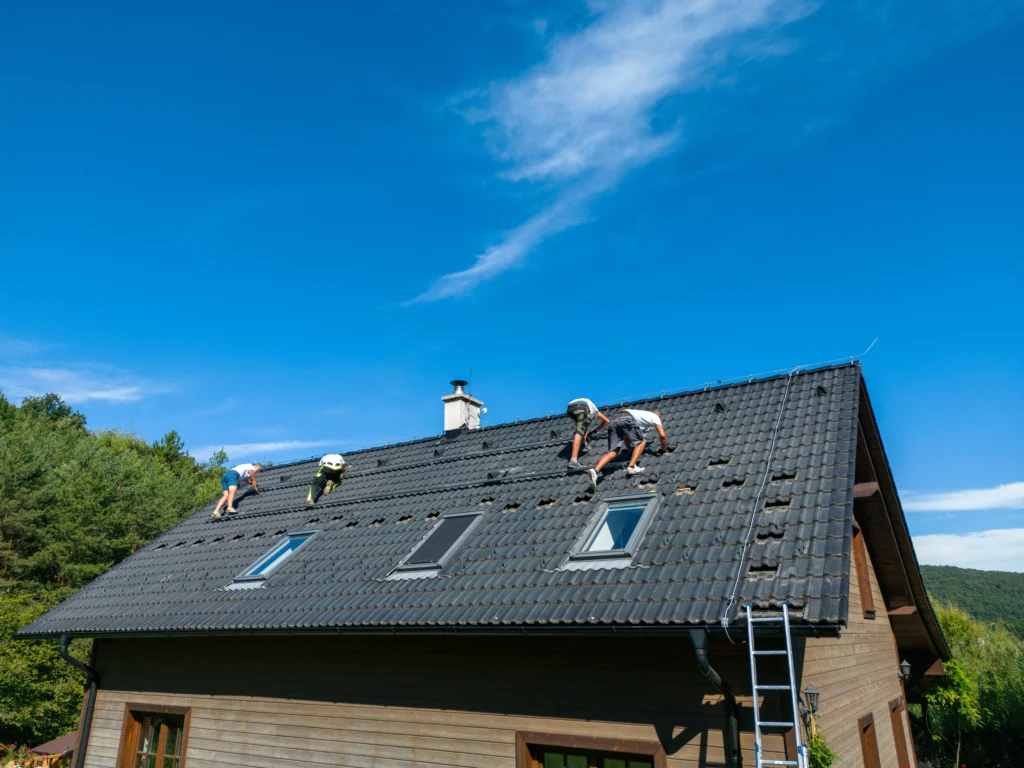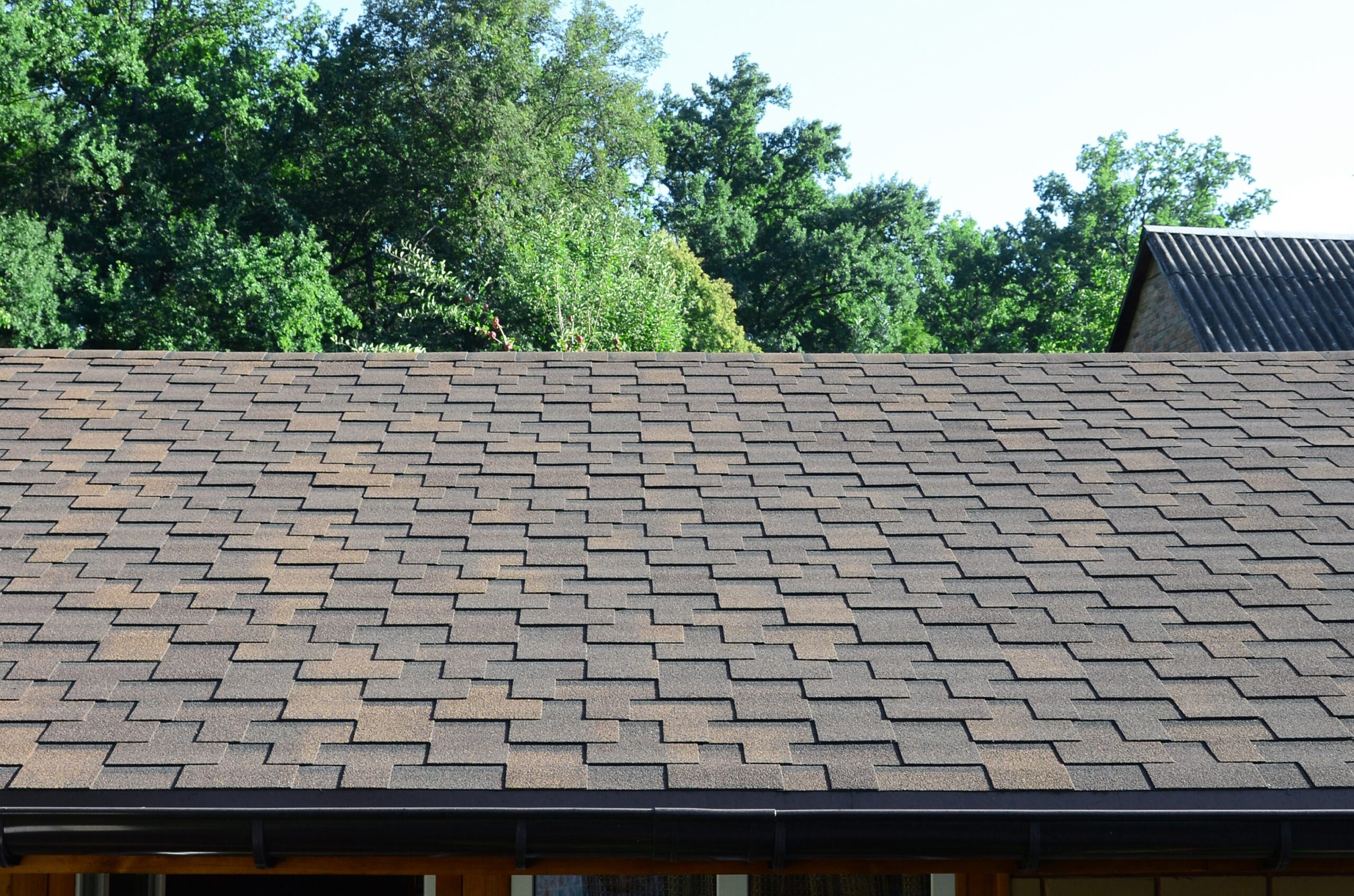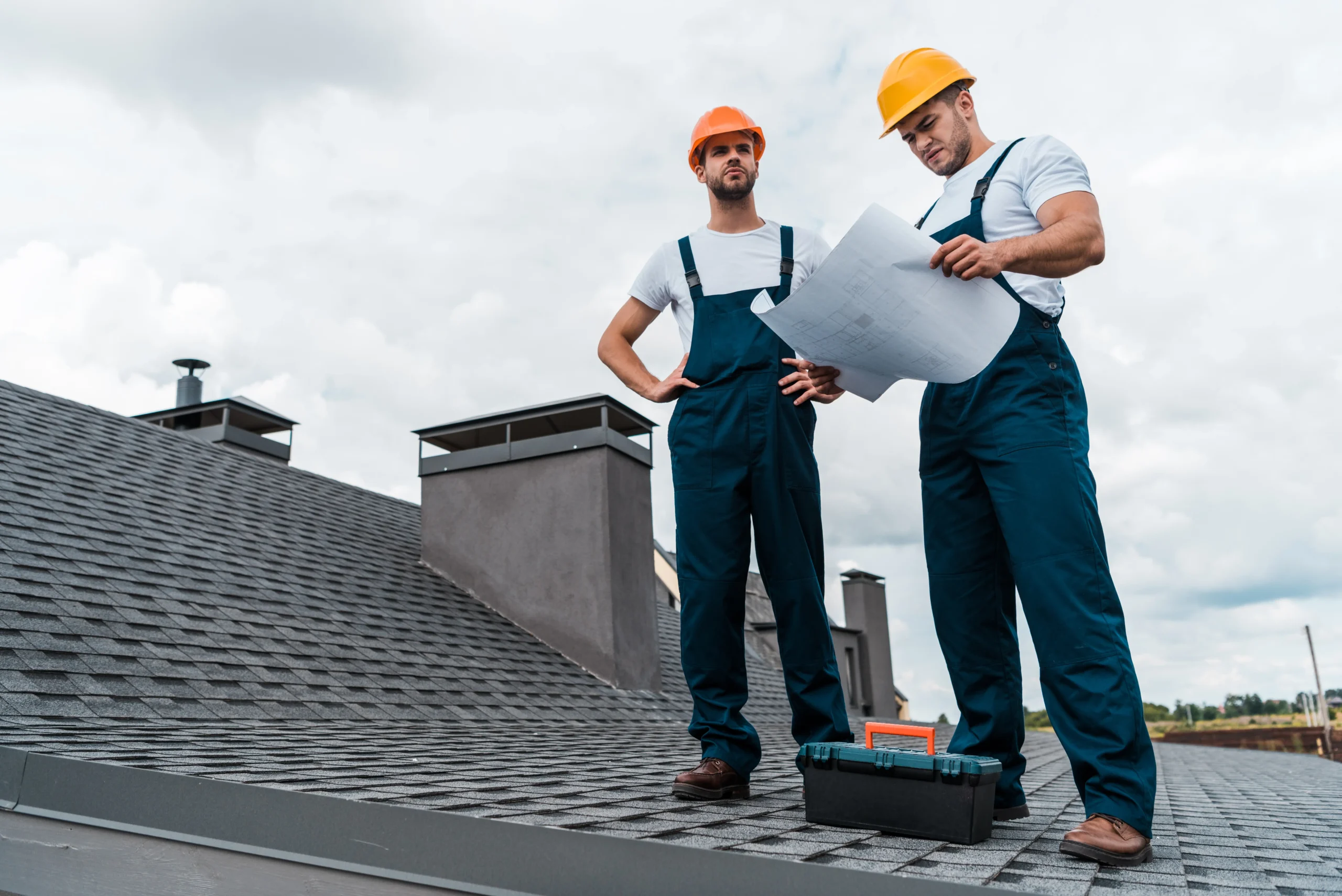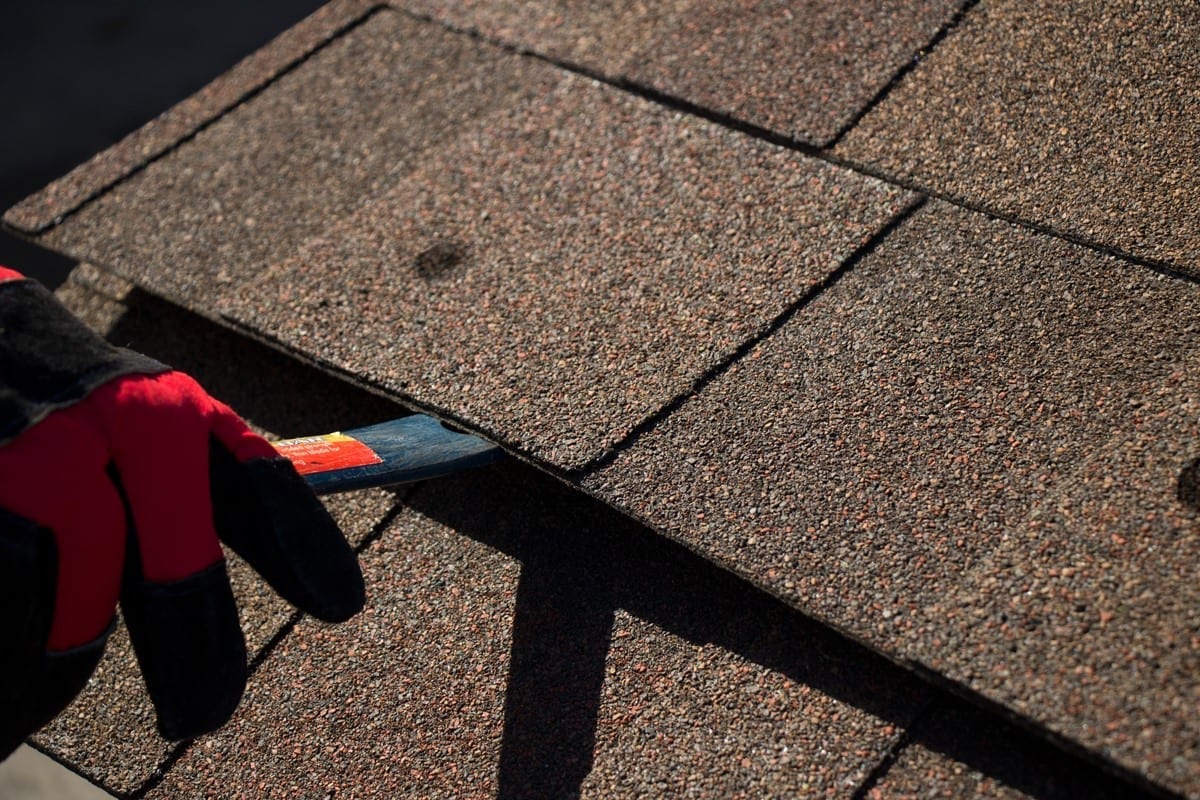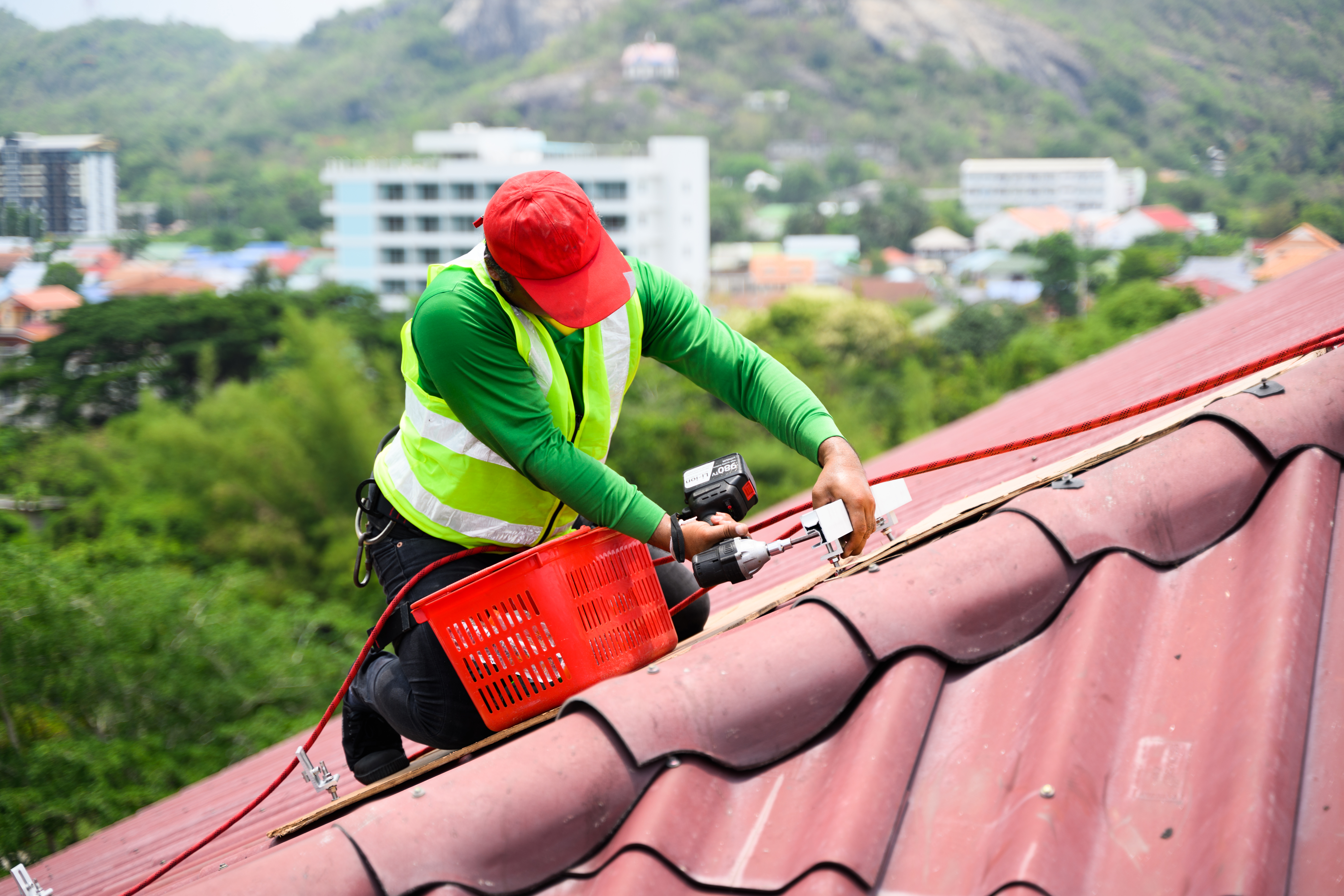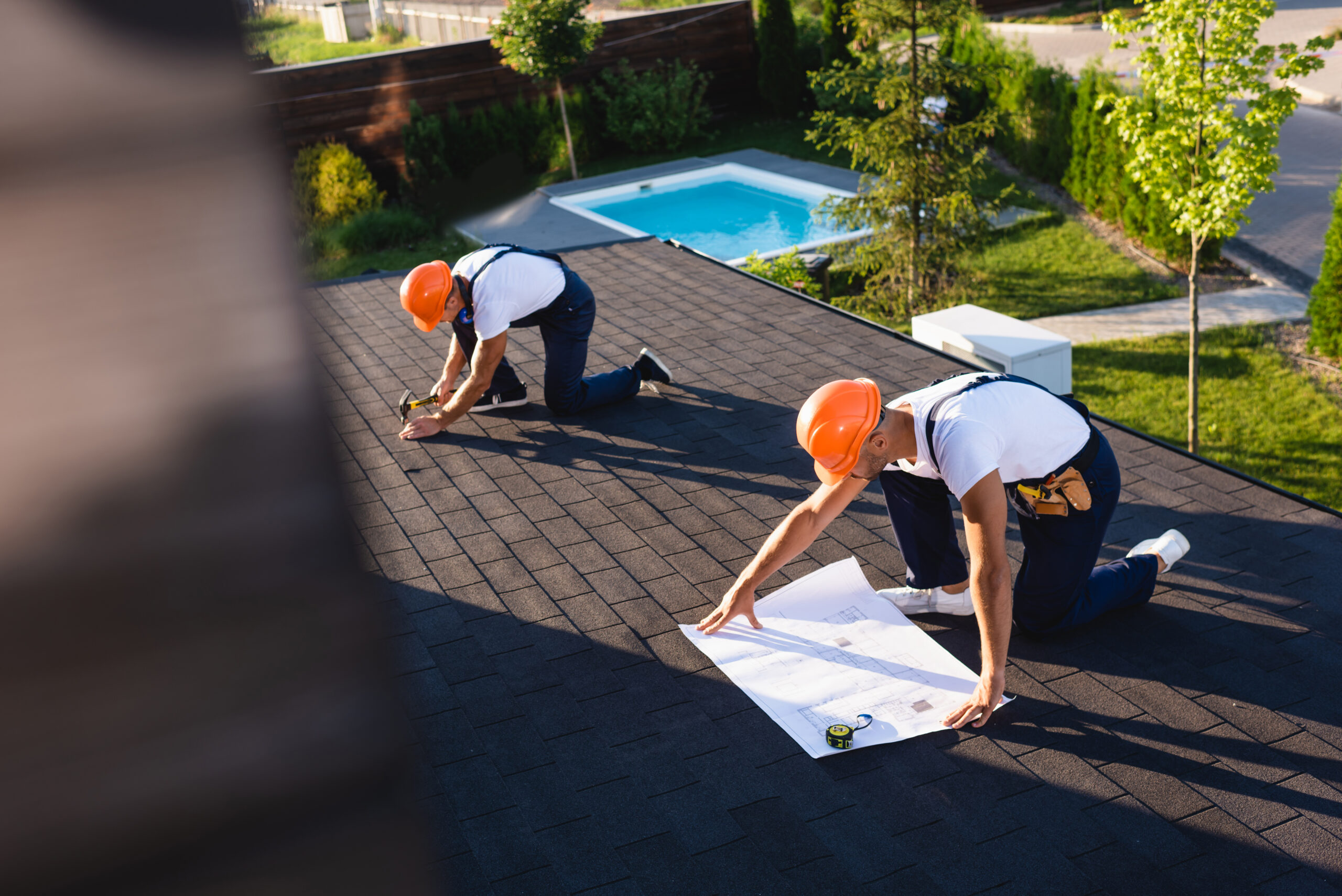Energy-Efficient Roofing Solutions | Save on Bills & Energy
Energy-efficient roofing solutions reduce your heating and cooling costs while protecting your home from extreme weather. Modern roof materials reflect sunlight, improve insulation, and lower energy consumption by 15 to 30 percent compared to traditional asphalt shingles.
The right roof saves money year after year while increasing property value and reducing environmental impact. This guide explains which roofing options deliver maximum energy savings and how to choose the best solution for your home.
Table of Contents
- How Energy-Efficient Roofing Impacts Heating and Cooling
- Metal Roofing: Durability Meets Energy Savings
- When Roof Replacement Makes Financial Sense
- Cutting Your Utility Bill with Smart Roof Choices
- Energy Star Certified Roofing Products
- Comparing Roof Types for Maximum Efficiency
- Long-Term Strategies to Save Money
- Roof Coating Solutions for Existing Systems
- Environmental Impact of Modern Roofing
- FAQ
- Conclusion
How Energy-Efficient Roofing Impacts Heating and Cooling
Your roof directly affects indoor temperature stability. Dark colored traditional roofs absorb heat during summer months, forcing air conditioning systems to work harder. Energy-efficient alternatives reflect solar radiation, keeping attics and living spaces cooler.
Energy-efficient roofs reduce cooling costs by 10 to 30 percent through improved solar reflectance and thermal emittance, while enhanced insulation cuts winter heating expenses by 15 to 25 percent.
Cool Roofs and Solar Reflectance
Cool roofs use specialized materials or coatings that reflect 50 to 90 percent of sunlight versus 5 to 15 percent for standard dark asphalt shingles. This technology, tested extensively by the Lawrence Berkeley National Laboratory since 2023, demonstrates measurable temperature reductions of 50 to 60 degrees Fahrenheit on roof surfaces.
Lower surface temperatures translate directly to reduced heat transfer into your home. Homeowners in hot climates report air conditioning cost reductions of $200 to $600 annually after installing cool roof systems.
Light colored metal or tile roofs deliver superior solar reflectance compared to asphalt shingles, even when both carry Energy Star certification. The reflective properties remain effective for 20 to 50 years with minimal maintenance.
Energy Savings Through Proper Insulation
Roof insulation creates a thermal barrier preventing heat loss in winter and heat gain in summer. The Department of Energy recommends R-values between R-30 and R-60 for attic insulation depending on climate zone, with higher values in colder regions.
Combining reflective roofing materials with adequate insulation creates a comprehensive energy management system. Tom Jannace Roofing Inc. evaluates both components during inspections to identify gaps where energy efficiency improvements deliver maximum return on investment.
Metal Roofing: Durability Meets Energy Savings
Metal roofing stands out as one of the most energy-efficient materials available in 2025. These systems reflect 60 to 70 percent of solar energy while lasting 40 to 70 years, far exceeding the 15 to 20 year lifespan of asphalt shingles.
Metal roofs cost 2 to 3 times more upfront than asphalt but deliver 25 to 40 percent energy savings, require minimal maintenance, and often pay for themselves within 15 to 20 years through utility bill reductions.
Energy-Efficient Materials and Coatings
Modern metal roofing incorporates factory-applied reflective coatings meeting Energy Star standards. These specialized finishes enhance solar reflectance while protecting against corrosion and color fading for decades.
Standing seam metal roofs, particularly popular in Suffolk County installations, create natural air gaps that improve ventilation and reduce heat transfer. This design keeps attics 10 to 15 degrees cooler than traditional roof systems.
A Stony Brook homeowner replaced aging asphalt shingles with Energy Star certified metal roofing in spring 2024. Their summer cooling costs dropped 28 percent, saving approximately $340 during June through September compared to the previous year.
Cost Savings Over Time
While metal roofing requires higher initial investment, the total cost of ownership favors metal over 30 to 50 years. Minimal repairs, no periodic replacement cycles, and sustained energy savings create compelling long-term value.
Insurance companies often discount premiums 10 to 20 percent for metal roofs due to superior fire resistance and wind performance. Combined with energy savings, these financial benefits accelerate payback periods substantially.
When Roof Replacement Makes Financial Sense
Roof replacement becomes economically advantageous when repair costs exceed 30 percent of replacement value or when existing systems surpass 20 years of age. Energy-efficient upgrades during replacement maximize return on investment through immediate utility bill reductions.
Replace roofs showing significant damage, frequent leaks, or nearing 20 years old. Modern energy-efficient alternatives reduce cooling costs 15 to 30 percent while adding $10,000 to $20,000 in home resale value.
The R.O.O.F. Decision Framework
Use this systematic approach when evaluating replacement timing:
Return on Investment: Calculate energy savings over 10 to 20 years
Opportunity Cost: Compare continued repairs versus new system benefits
Operational Efficiency: Assess current heating and cooling performance
Future Resale Value: Consider market appeal of energy-efficient features
This framework helps homeowners make data-driven decisions rather than reactive emergency replacements during leak crises.
Checklist: Signs You Need Roof Replacement
- Shingles curling, cracking, or missing entirely
- Roof age exceeding 18 to 20 years
- Attic temperatures 15+ degrees above outdoor temps
- Rising energy bills despite stable usage patterns
- Water stains on ceilings or walls
- Granules accumulating in gutters
Address these warning signs proactively to avoid emergency situations and capitalize on energy-efficient upgrade opportunities.
Cutting Your Utility Bill with Smart Roof Choices
Strategic roofing decisions reduce energy bills by hundreds of dollars annually. Reflective materials, proper ventilation, and adequate insulation combine to minimize heating and cooling demands throughout the year.
Homeowners save $300 to $900 annually on energy costs by upgrading to Energy Star certified roofing systems with proper attic insulation and ventilation, with savings varying by climate zone and home size.
Improve Energy Efficiency Through Ventilation
Ridge vents, soffit vents, and attic fans create continuous airflow that expels hot air during summer months. Proper ventilation reduces attic temperatures by 20 to 40 degrees, significantly decreasing cooling demands.
Tom Jannace Roofing Inc. incorporates ventilation assessment in every roof inspection, identifying insufficient airflow that compromises energy efficiency. Adding or upgrading ventilation costs $500 to $2,000 but delivers noticeable comfort improvements and energy savings.
Combine reflective roofing with enhanced ventilation for maximum impact. The synergy between these systems delivers 35 to 50 percent better performance than either solution alone.
Energy Star Certified Roofing Products
Energy Star certification ensures roofing products meet strict solar reflectance and thermal emittance standards established by the Environmental Protection Agency. These independently tested materials deliver verified energy performance across diverse climate conditions.
Energy Star roofs reflect at least 25 percent of solar energy in steep-slope applications and 65 percent in low-slope installations, reducing cooling costs 7 to 15 percent compared to standard products.
Best Roofing Types for Energy Star Compliance
Metal roofing, tile roofs, and specially coated asphalt shingles earn Energy Star certification when meeting reflectance thresholds. The certification label guarantees third-party testing validates manufacturer performance claims.
Suffolk County homeowners benefit particularly from Energy Star products during humid summers when air conditioning represents 40 to 60 percent of total energy consumption. Reflective roofs reduce this load substantially, extending HVAC system lifespan by 3 to 5 years.
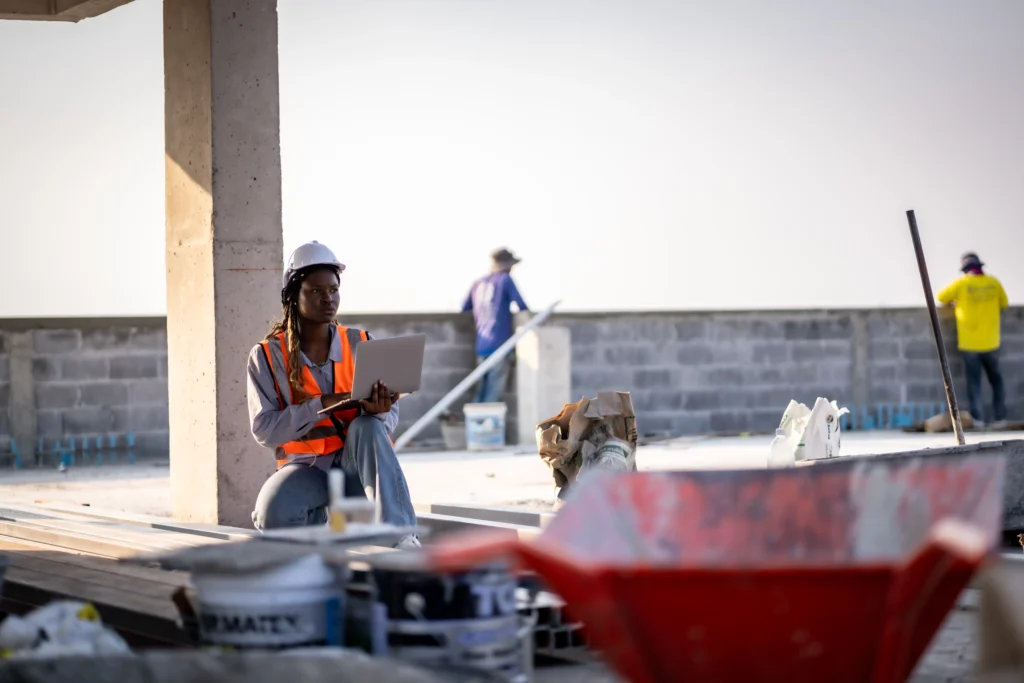
Comparing Roof Types for Maximum Efficiency
Different roofing materials offer varying energy efficiency, durability, and cost profiles. Metal, tile, slate, and asphalt each present unique advantages depending on budget, aesthetic preferences, and climate considerations.
Metal roofs lead in energy efficiency with 60 to 70 percent solar reflectance and 50-plus year lifespans. Tile roofs offer 50 to 65 percent reflectance with excellent thermal mass properties. Energy Star asphalt shingles provide budget-friendly efficiency at 25 to 40 percent reflectance.
Traditional Roofs versus Modern Alternatives
Standard dark asphalt shingles absorb 85 to 95 percent of solar radiation, creating roof surface temperatures exceeding 170 degrees Fahrenheit on summer days. This extreme heat radiates into attics, overwhelming insulation capacity and driving cooling costs upward.
Modern alternatives reverse this dynamic. Clay tile roofs naturally reflect sunlight while their thermal mass moderates temperature fluctuations. Metal systems deflect heat before it penetrates the roof deck, keeping attic spaces dramatically cooler.
A Port Jefferson property manager replaced traditional asphalt roofs on a 12-unit apartment building with standing seam metal in 2023. Tenant cooling costs decreased an average of $180 per unit annually, while the property’s Energy Star certification attracted environmentally conscious renters willing to pay premium rates.
Long-Term Strategies to Save Money
Energy-efficient roofing generates compound savings through reduced utility bills, decreased HVAC maintenance, extended equipment lifespan, and increased property value. These benefits accumulate substantially over 20 to 50 year roof lifespans.
Quality energy-efficient roofs save homeowners $5,000 to $15,000 over 25 years through lower energy costs, while adding $12,000 to $25,000 in resale value according to 2024 National Association of Realtors data.
Absorb Heat Less, Save More
Light colored roofing materials in shades of white, tan, or light gray absorb 30 to 60 percent less heat than dark surfaces. This simple color choice delivers measurable energy savings without premium material costs.
Homeowners concerned about aesthetic preferences should know that modern cool roof technology now includes attractive color options beyond traditional white. Manufacturers offer dozens of Energy Star certified shades matching diverse architectural styles.
Roof Coating Solutions for Existing Systems
Reflective roof coatings transform existing dark surfaces into energy-efficient cool roofs without complete replacement. These liquid-applied membranes cost $1.50 to $3.50 per square foot installed, substantially less than new roof systems.
Roof coatings extend existing roof lifespan 5 to 15 years while improving solar reflectance to 75 to 90 percent, reducing cooling costs 10 to 25 percent with payback periods of 2 to 5 years.
Reflective Roof Coatings Application
Professional application ensures proper surface preparation, adequate coating thickness, and complete coverage without gaps. Tom Jannace Roofing Inc. applies elastomeric and acrylic coatings that remain flexible through temperature extremes, preventing cracking and maintaining reflective properties for 10 to 15 years.
Coatings work best on structurally sound roofs with 5 to 15 years of remaining life. They address energy efficiency concerns while postponing replacement costs, making them ideal solutions for budget-conscious homeowners seeking immediate energy savings.
Environmental Impact of Modern Roofing
Energy-efficient roofing reduces carbon emissions by decreasing fossil fuel consumption for heating and cooling. A typical Energy Star roof prevents 2 to 4 tons of CO2 emissions annually, equivalent to removing one car from roads for 6 to 12 months.
Cool roofs mitigate urban heat island effects by reflecting solar radiation rather than absorbing it, reducing ambient temperatures in densely built areas by 2 to 5 degrees Fahrenheit and improving air quality.
Environmental Benefits Beyond Energy Costs
Metal and tile roofing materials last 40 to 100 years, eliminating repetitive waste from replacing asphalt shingles every 15 to 20 years. Metal roofs contain 25 to 95 percent recycled content and remain 100 percent recyclable at end of life.
These sustainability factors appeal to environmentally conscious homeowners while delivering practical performance benefits. Suffolk County properties with Energy Star roofing often command higher resale prices as buyers increasingly value efficiency and sustainability.
FAQ
How much can energy-efficient roofing reduce cooling costs?
Energy-efficient roofs typically reduce cooling costs 10 to 30 percent depending on climate, roof type, and insulation quality. Homeowners in hot climates save $250 to $600 annually on air conditioning expenses alone.
What is the most energy-efficient roofing material?
Metal roofing leads with 60 to 70 percent solar reflectance and superior durability. Clay or concrete tile roofs follow closely at 50 to 65 percent reflectance. Energy Star certified asphalt shingles offer budget-friendly efficiency at 25 to 40 percent reflectance.
Do light colored roofs really make a difference?
Yes. Light colored roofs reflect 60 to 80 percent of sunlight versus 5 to 15 percent for dark roofs. This translates to roof surface temperature reductions of 40 to 60 degrees Fahrenheit and measurably lower cooling costs.
How long do energy-efficient roofs last?
Metal roofs last 40 to 70 years, tile roofs 50 to 100 years, and Energy Star asphalt shingles 20 to 30 years. All significantly outlast traditional 15 to 20 year asphalt shingle lifespans while maintaining energy efficiency throughout their service life.
Conclusion
Energy-efficient roofing solutions deliver immediate comfort improvements and long-term financial benefits through reduced utility bills, extended roof lifespan, and increased property value. Modern materials like metal roofing and reflective coatings provide proven performance backed by Energy Star certification and decades of real-world testing.
Choosing the right energy-efficient roof requires evaluating your climate, budget, and long-term ownership plans. Professional assessment ensures you select systems maximizing return on investment while meeting aesthetic preferences.
Contact Tom Jannace Roofing Inc. at (631) 751-4734 for a free roof inspection and expert guidance on energy-efficient roofing upgrades that reduce your utility bills and protect your Suffolk County home.
